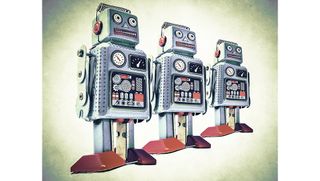Do firms need a chief robotics officer to oversee automation efforts?
Gartner urges organizations to create the new role to implement and manage robotics strategies

Organizations should consider creating the role of a chief robotics officer to tackle the growing use of robotics and automation within the workplace.
Robotics and automation are taking over more tasks in organizations and as such, businesses need someone to manage the proliferation of these technologies, according to a panel discussion at Gartner’s virtual supply chain symposium.

Evaluating S/4HANA and RISE as part of your digital transformation journey
How to develop a business case for SAP S/4 HANA and RISE
Nearly every business is going to have a robot doing something for them within the next decade, says Dwight Klappich, VP analyst with the Gartner Supply Chain practice. He added that in a survey of more than 500 supply chain professionals last year, the analyst firm found that that 96% of respondents had used, or plannedto use, cyber-physical automation in warehousing and manufacturing operations.
The discussion heard that while the robotics market offers a variety of options to potential buyers as innovation keeps pace with demand, many organizations lack internal robotics and automation expertise and don’t know enough to make an informed and strategic decision. This means that most firms haven’t figured out who owns, and should manage, their growing fleets of robots.
Klappich said that automation is going to be much more strategy-led in the future.
“If a retailer wants to establish an automated micro fulfillment center, there needs to be a strategy on how this will come to be. Someone must take on the leadership role and develop this strategy and the organization to implement it. This person needs in-depth technology skills, but also must have a sense for how automation fits into the broader organization and drives value to the business,” he added.
According to Gartner, the skill set of a chief robotics officer should combine skills from the engineering, IT, and business realms. However, one big challenge was the multitude of cultural differences between those areas. While engineers ant to make things as safe as possible, even if it takes more time for testing. IT values agile processes and likes to fail fast and move on.
Get the ITPro. daily newsletter
Receive our latest news, industry updates, featured resources and more. Sign up today to receive our FREE report on AI cyber crime & security - newly updated for 2024.
Added to this is the business mindset that needs to consider the value of humans, resources, and processes and how to best combine them. Finding someone who can balance these often-conflicting cultures will be game-changing, experts agree.
“The CRO role in supply chain will evolve similar to the CIO role in IT and start gaining in importance over the decade. If an organization is already automation-heavy, or wants to be, it’s best to start out with establishing a robotics center of excellence and work their way from there,” Klappich added.
Rene Millman is a freelance writer and broadcaster who covers cybersecurity, AI, IoT, and the cloud. He also works as a contributing analyst at GigaOm and has previously worked as an analyst for Gartner covering the infrastructure market. He has made numerous television appearances to give his views and expertise on technology trends and companies that affect and shape our lives. You can follow Rene Millman on Twitter.





